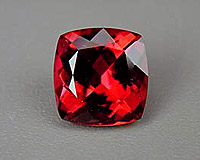
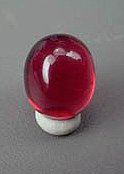
Rubellite is the name given to dark pink to red tourmalines, especially those with reasonably saturated colors and medium to dark tones. Ruby red stones with little orange or brown overtones are the most highly sought after. GIA has traditionally classified rubellite (along with Emerald) as a Class III gem, meaning that it is almost always included. This is somewhat less true in recent years as deposits from certain regions of Africa yield much cleaner rough. Alas, these stones, so often tinged with brown, almost never approach the ruby like color of the best of those from older, more included, Brazilian deposits. Russia, Brazil, Madagascar, Nigeria and the US are productive sites for this gem.


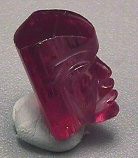
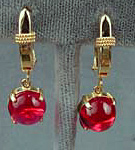
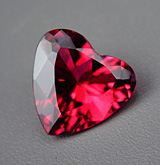
Natural pink to red color is created by trace amounts of manganese in the chemical composition. Cat's eye stones are sometimes available. Irradiation, in some cases with heating, is a now common practice, and can produce stable red tones in otherwise pale pink stones. As this practice is undetectable all stones must be presumed to be treated even though this may not be the case for an individual stone.
Highly included rubellites are sometimes treated with fillers similar to those used on emeralds. This treatment, however, is detectable by standard methods. All tourmalines make excellent jewelry stones and require no special care.
Due to scarcity and beauty, the most valuable pieces are untreated, clean (eyeclean or better) deep pinkish red to slightly purplish red stones. Those with light pink color are sometimes offered as rubellite, but more properly should be labelled pink tourmaline. Brownish tones decrease value considerably. A custom cut adds value, although the majority of Brazilian pieces are native cut.